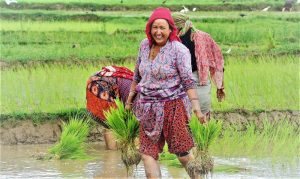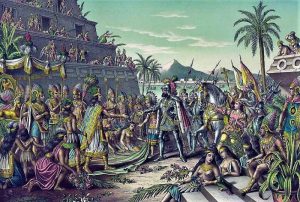Polyandry
Polyandry is, in fact, a rare phenomenon, though not as much as was thought, and the understanding of the variables that define the term is evolving. The two best known areas in which polyandry was studied and continued to be practiced in the 21st century are the Tibetan Plateau and the Marquesas Islands in the South Pacific. However, in a report published in 2012, anthropologists Kathrine Starkweather and Raymond Hames identified 53 additional non-classical societies around the world that also practice polyandry, either formal (i.e., recognized by marriage and joint residence) or informal (when two or more men consider themselves co-parents of the offspring and invest in the care of the mother and child or children).
What is polyandry?
It is a term used to refer to a woman who is married to different men at the same time and may be married to two, three or more men at the same time.
Polyandry is generally considered to be a response to peculiar localized conditions, including male and female gender ratios, adult male mortality, male absenteeism, social stratification, and the economic base of the group. Practically, all societies in which the practice of polyandry is accepted are based on hunting and gathering or on the agricultural sector.
Etymology
The word etymology is composed of the prefix “poly” which comes from the Greek “πολυ” (poly) and means abundance or plurality and “ανδρος” (andros) which is the genitive form of “ανηρ” (anēr) which means yarn.
Origin of polyandry
Custom developed in human cultures where resources, particularly land and food, were scarce, and where women could own property or ancestral titles of rank. In some parts of the world it occurred in areas where women themselves were scarce, for example, in cultures where female infanticide was routinely carried out, or where women were less likely to survive into adulthood.
Polyandry allowed men to pool their resources and live a comfortable life that would otherwise have denied them and their children. And in these relationships, women often enjoyed a very high status.
It occurred throughout the Indian subcontinent, in areas such as the Canadian Arctic, and in parts of Africa, China, and the Americas. We know that, in some ancient Celtic societies, women were allowed to own property and therefore marry more than one husband, because Julius Caesar complained about it along with other customs. Around 2300 B.C., the Sumerian king Urukagina of Lagash completely abolished the custom of polyandry in Mesopotamia. Polyandry was also banned successively by monotheistic religions, Judaism, Christianity and Islam.
Polyandric Family
The polyandric family consists of a marriage between a woman and several men. This practice has been observed in villages where the culture is quite backward and in which there is a great shortage of women, caused by the practice of infanticide of the children.
Polyandry in animals
Polyandry seen from the biological or animal point of view is the female practice that animals have of mating with several males at the same time and is very common in the animal kingdom. It is a practice that occurs despite the fact that for some females the price is high, as for example the females of the fruit fly, who when practicing polyandry consume energy excessively and thus precipitate their death.
In particular, some males carry on their X chromosome the SR gene, which specialists classify as a selfish gene because it causes all sperm carrying the Y chromosome to die. This means that this type of animal can only produce female offspring, and that their offspring carry the damaged DNA in their genes.
Example of polyandry
In Nepal we see for example the kingdom of Mustang which is located in northern Nepal at an altitude of almost 4,000 meters. It is inhabited by “the wolves”, a name given to an ethnic Tibetan group. The arid farmland in this place is very scarce and the succession of property rights is given to men, so in a family the eldest son is the sole heir of all the land and the only one with the right to marry a single woman, who in turn will be the wife of his brothers. A man who does not want to marry his brother’s wife can become a Buddhist monk or a servant under his brother’s orders.
There is no sense of fatherhood, and children only differentiate the older brother as their own father.
How to cite this article?
Briceño V., Gabriela. (2019). Polyandry. Recovered on 23 February, 2024, de Euston96: https://www.euston96.com/en/polyandry/










